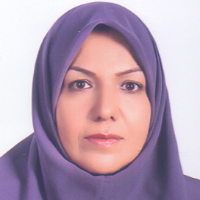Typology of Egyptian glassware and its comparison with symbols, motifs and decorations of Iranian glassware (5th and 6th centuries AH)
Author(s):
Article Type:
Research/Original Article (بدون رتبه معتبر)
Abstract:
The art of glassware grew so much in the 5th and 6th centuries AH that it has always been mentioned as a glorious era in the history of glassmaking in Egypt and Iran. The glass artifacts of this period grew exponentially in terms of the variety of decorations, including carvings (linear, frame and embossed), enameling and gold-painted paintings. Painting with gold also became popular among the artists of this period, examples of which are obtained from Fustat. In terms of variety of products, the art of glassware of this period includes all kinds of narrow dishes, cups, vases, cups, jugs, lamps and even chess pieces. This research has been done in a comparative-historical method with reference to library sources with an analytical approach and seeks to answer the basic questions whether the study of glass patterns of the 5th and 6th centuries AH. AH can identify the commonalities or differences of this art in the two lands of Egypt and Iran? Do the similarities between the designs of this art in the two lands show the effect of its extensive trade with neighboring regions? In the meantime, important cities such as Fustat, Alexandria, Cairo and then in Iran, Neishabour, Rey, Gorgan, Susa and Siraf were introduced as glass manufacturing centers at that time. Manufacturing techniques in the glass industry in the 5th and 6th centuries AH. AH has been used in Egypt to achieve the components of decorative motifs and ornaments. Hence, various motifs, including plant, animal, geometric and written,
Language:
Persian
Published:
Journal of Islamic Archaeology Studies, Volume:2 Issue: 4, 2024
Pages:
7 to 28
https://magiran.com/p2681161
مقالات دیگری از این نویسنده (گان)
-
An Analysis of Spatial Configuration at Qal’eh Dokhtar, Kerman Using the Space Syntax Technique
Sare Tahmasbizade, *, Saeed Amirhajloo
Iranian Journal of Archaeological Studies, Summer and Autumn 2023 -
The role of Qal’eh Ardeshir on the Kerman’s Spatial Organization based on architectural evidence and historical sources
Sare Tahmasbi Zade, *, Saeed Amirhajloo
Maremat & memari-e Iran,



